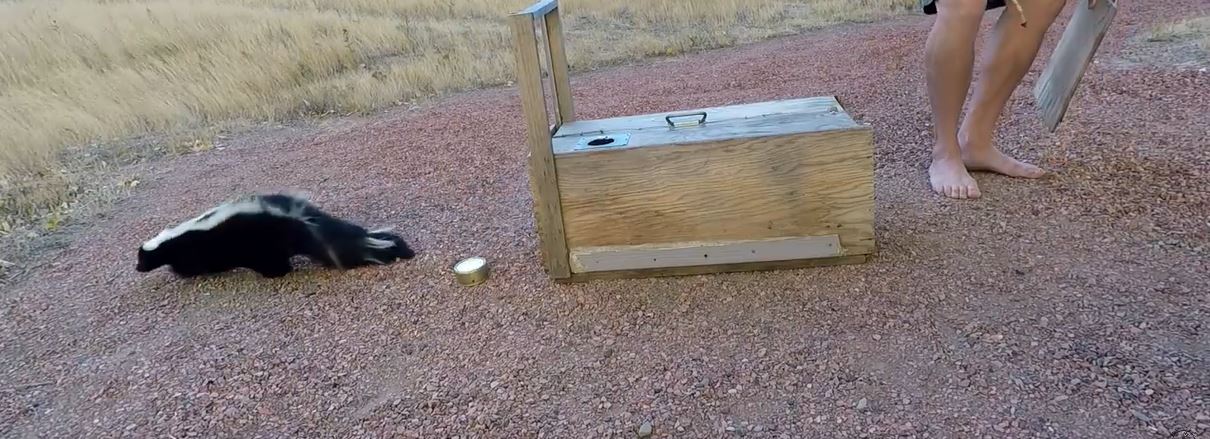About Skunks: Appearance, Biology, Life Cycle, Habitat, Diet, And Behavior

Some facts concerning skunks are common knowledge, but the average person doesn't know more about this species than their basic appearance and the foul-smelling odor they produce. It is a good idea to learn more about these potentially stinky animals as they can sometimes be found on your property. The scientific name for skunks is Mephitis mephitis and they are complex mammals found throughout the United States.
Appearance
Skunks come in a wide range of sizes, with the head and body measuring anywhere from 8 to 19 inches and the tail measuring between 5 and 15 inches. They typically weigh between 7 ounces and 14 pounds, but most of the time, they will be similar in size to a common house cat.
Every single skunk has bright black and white, something which makes them easier to recognize if you want to avoid their stench. Despite these similarities, there is a range of spotted, swirled, and striped patterns. Skunks have long nails and strong forefeet for digging.
Biology And Life Cycle
A mother skunk typically gives birth to a litter of between two and ten young skunks every year following a gestation period of 7 to 10 weeks. They are typically born in May and then will stay with their mother for several months before heading out on their own during late July to early August. At birth, skunks are blind, opening their eyes at between 3 and 4 weeks old. This is also when they start developing their adult colors. They will start breeding when they are about a year old. When in captivity, skunks can live to reach 10 years of age, but the average age of wild skunks is just 3 years due to predators, such as owls, bobcats, and coyotes as well as humans.
Habitat
The vast majority of skunks can be found in the Americas, with the exception of the Asian stink badgers, which are part of the skunk family. Spotted skunks are found throughout the majority of the US and Canada while striped skunks can be found throughout the southern portion of Canada, northern Mexico, and everywhere in between. You will also find hog-nosed and hooded skunks in limited areas throughout Mexico, the southeast, and the midwest.
Skunks are able to live in nearly any environment where they can find shelter and food. They usually live within about two miles of water since this is the maximum distance they typically travel. These animals will typically find a burrow that was built by another animal and make that their home. They have also been known to find abandoned buildings, porches, sheds, brush piles, or hollow logs to live in. If they can't find other shelter, they will dig a burrow themselves. In cold areas, it is possible for skunks to sleep in their nests over the course of several weeks at the coldest time of the year.
Diet
Skunks have a varied diet as they are opportunistic omnivores. They forage at night, looking for plants, fruits, worms, larvae, insects, eggs, small mammals, reptiles, or fish. Their opportunistic nature means that they will also eat human garbage and eggs. They are also able to eat rattlesnakes since they are immune to their venom. The typical diet of a skunk will be mostly from animal food, although the exact amount of meat and plant-based foods depends on the nearby food sources.
Behavior
Nearly everyone is aware of the powerful smell skunks produce when threatened. This predator deterrent is hard to remove and comes in the form of an oily liquid which is secreted by glands found underneath the tail. Skunks will turn around then spray this mist up to ten feet away. There is typically some warning in the form of the skunk hissing, stamping its feet, and lifting its tail. While the spray can cause discomfort, it doesn't actually cause any harm to people or animals unless it comes in contact with the eyes. It may, however, linger for days no matter how hard you try to get rid of it. Amazingly, you can sometimes detect a skunk's spray from a distance of 1.5 miles away from the site.
Skunks are nocturnal animals, so you are most likely to notice them being active at night. Although they don't hibernate, they are not very active during the heart of winter. In some areas with very cold climates, they may enjoy a winter sleep lasting several months, although this is not a true hibernation. They will usually live and forage by themselves, except during the coldest part of winter, when they warm up in communal dens.
Due to their forefeet and nails, skunks are great diggers. This skill helps them create shelter when no other option is available. It also means that they are likely to leave holes in your lawn or garden while looking for earthworms or grubs.
Read the How to get rid of skunks page for helpful information and to learn more about About Skunks: Appearance, Biology, Life Cycle, Habitat, Diet, And Behavior

